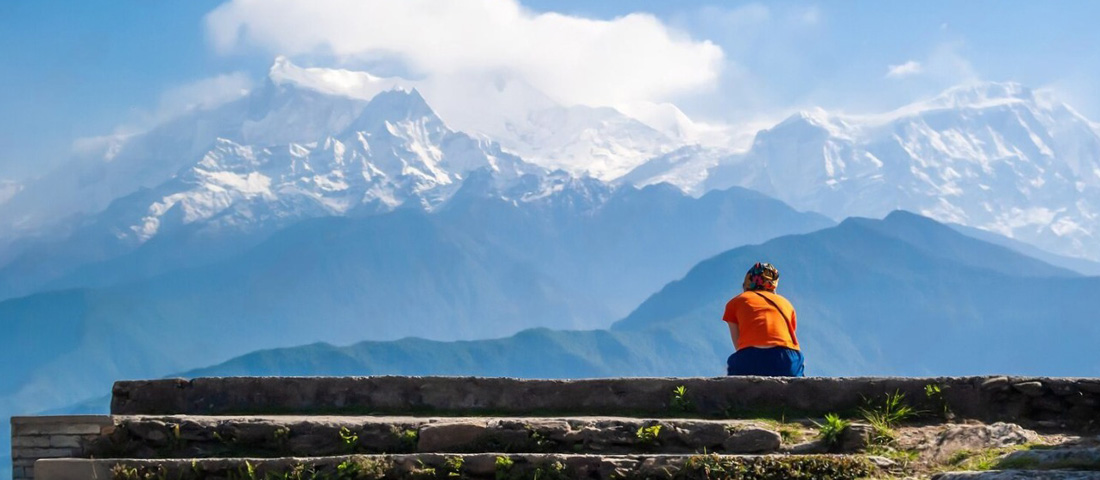Brief History of Yoga in India

“Yoga is the Path of Purification,
Leads to mental peace formation.
Yoga is self-realisation,
The only true source of positive emanation.”
Yoga nowadays has become a rather familiar way to build upon core strength, enhance flexibility, reduce stress, walk towards the path of psychic stability. People have adopted Yoga in daily life in order to lead not only a healthy physical but also healthy mental conduct of life, a way of life that cleanses body, soul and mind.
This newfound way of improving lifestyle actually originated more than 5000-years ago in the heartland of India. Yoga, the older system of mental and physical practices includes physical activities, conception, meditation, breathwork and behaviour principles.
History of Yoga in India traces its existence in the oldest literature such as Vedas, Upanishads, Puranas, Buddhist literary works, Panin etc. According to the Puranas, the first yoga guru or the ‘Adi Guru’ is deemed to be Lord Shiva. Shiva in his various yogic practices is designated to be a relentless meditation expert.
Hunting down to its origin, the word Yoga was derived from yet another word “Yuj” that is believed to have come from one of the oldest Indian languages Sanskrit. The word Yuj means to connect or unite. In broader terms, Yoga is known to be the union of the individual soul called Atma and the Superior universal soul called Parmatma in order to attain a state of well being.
Yoga in the ancient world was known to be obscure and ambiguous essentially because of two reasons. Firstly, Yoga was considered to be among one of the many superpowers achieved by saints and meditators who were specifically called Mahapurush. Yoga then was not for the common or the Saadhaaran people. Secondly, Yoga was taught orally in a very secretive manner. The early writings of Yoga are known to be found on the palm leaves only in some reserved places. Due to its fragile nature, the scriptures failed to survive.
Even so, it is speculated that the development of Yoga was registered 5000 years, some scholars believe that Yoga may be a practice that is 10,000 years old. Amidst speculations, the great rich history of Yoga can be divided into the following periods:
1. Pre-Classical Yoga
In the Pre-Classical period around 5000 years ago, Yoga is believed to have been originated in the Indus-Sarwasti civilization of Northern India. ‘Yoga’ as a word has its mention even in the oldest religious texts, The Rig Veda. In this period, Yoga was refined and further expanded by Brahmans and the Rishis as they documented their theories and practices of preaching the sacrifice of the self-esteem into self-knowledge, action (karma yoga) and wisdom (jnana yoga) in the Upanishads containing various scriptures. Bhagavad Gita is among the most renowned of those Upanishads.
2. Classical Yoga
The pre-classical stage of Yoga saw a jumble of various different opinions, techniques and approaches that often contrasted with each other. Whereas the Classical period saw a structuring of these practices and theories and came to be defined as Patanjali’s Yoga-Sutras which was written sometime back in the second century. The text Yoga Sutra explains the pathway of Raja Yoga or the ‘Classical Yoga’. This was the period when Patanjali established the practice of Yoga into an “Eight Limbed Path” that contained the measures and stages towards procuring Samadhi or what we better know as Enlightenment. Since Patanjali implemented a structured form of Yoga, he is often recognised as the father of Yoga and his Yoga-Sutra still remains the base of Modern-day Yoga styles.
3. Post-Classical Yoga
A few centuries after Patanjali’s contribution to the elevation of Yoga, a few learned men called masters formed a system of practices intended to rejuvenate the body. Discarding the teachings of the ancient Vedas, these masters fused the physical body as the means to attain enlightenment. Tantra Yoga, which incorporated progressive techniques to purge the body to split the cluster that keeps binding us to our physical existence. This journey to trace the physical-spiritual conjunctions led to the creation of what we principally think of Yoga today, The Hatha Yoga. The teachings of prominent gurus Such as great Acharyatrayas-Adi Shankracharya, Ramanujacharya, Madhavacharya remains notable in this period. The teachings of Suradasa, Tulasidasa, Purandardasa, Mirabai were also among the great patrons of Yoga during this period.
4. Modern Period
The most recent development in Yoga, the practices that we know today dates back to 18th century A.D considered as the modern period. This period registered modern practitioners or fondly known as Yogacharyas such as Ramana Maharshi, Ramakrishna Paramhansa, Paramhansa Yogananda, Vivekananda etc who participated in the development of Raja yoga. The modern period of Yoga saw the flourish of Vedanta, Bhakti yoga, Nathayoga or Hatha-yoga. Shadanga-yoga of Gorakshashatakam, Chaturanga-yoga of Hathayogapradipika, Saptanga-yoga of Gheranda Samhita being the branches of Hatha Yoga itself.
Yoga in today’s time is unquestionably a pathway to detoxify one’s body, mind and soul which germinated in India, however, it does not stick to any particular religion, belief system or community. Yoga has always been addressed as a technology that promotes physical and mental well being, something that every species is entitled to.
Sky Yoga Planet serves for the greater good to help you achieve a perfect balance between your body and mind. Join Us today!
See Also- 10 Reasons Why Triund Trek is the Best Trek in India
- A Guide to Booking Your Adventure
- Adventure Tour Company
- Best Time to Visit Ladakh
- Camping Places in Himachal
- Hidden Himalayas
- Himalaya adventure
- How tall is the largest tree in the world
- Kedarnath Yatra Package
- Nepal Trekking
- Trekking in Mcleodganj
- Trekking in Dharamshala
- 10 Tips to Travel with Children
- Dharamshala Cricket Stadium
- Top 10 Hotels in Mcledoganj
- 10 Tips for Booking Affordable Accommodation
- My Mcleodganj Trips 2023
- 10 Must See Summer Destinations in India
- The Mystical Caves of Meghalaya
- Hidden Gems Uncovering Indian Offbeat Destinations
- Kerala often referred to as Gods Own Country
- Discovering The Heritage of Pudicherry
- Exploring The Unexplored Offbeat Trails of Himachal Pradesh
- The Hidden Treasures of Himachal Pradesh
- Kasol Trekking Places
- Kullu Manali Informative Blog
- India
- Complete Information ABout Trekking Places in India
- Nepal Treks
- Charming India Righly Called a Travelers Paradise
- Best attractions in Bastar
- 10 Tourrist Sports and attractions in Orchha
- What to See in New Delhi
- Famous Cities and Forts of Kerala
- Faith Spirituality Temples in Kerala
- Visit to Khajuraho Madhya Pradesh
- Relaxing and Quiet Vacation Destination
- Himachal Pradesh
- Popular Trekking Destinations Perfect Monsoon
- Trekking At Ramadevara Betta
- Savana Durga Trekking
- Ladakh Less Explored Destination
- Journey from Delhi to Chopta
- Goecha La Trekking Experience
- Chopta Chandrashila Trekking
- Conquering the Himalayas
- Why The Triund Trek should be on every hikers bucket list
- My Hiking Experience to Triund
- Advntures Activities in Himachal Pradesh
- Dharamshala in Himachal Pradesh
- Natures Majesty and Finding Solace Heights
- Natures Majesty and Finding Solace Heights
- Benefits of Yoga as Supported by Science
- Yoga is Well Known to Implant Physical Benefits







